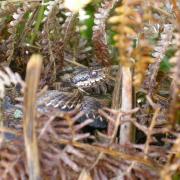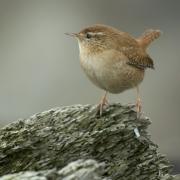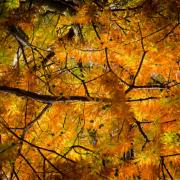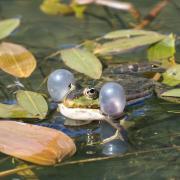The Sussex Wildlife Trust pick out an unusual flower to enjoy in February
It may not seem like the best time of year for botanising but there are some unusual flowers in bloom in February. Alongside the familiar clumps of snowdrops, thousands of yellow hazel catkins are ripening in the winter sunshine. They are flowers, despite appearances. A typical flower has showy petals, sometimes with an elaborate pattern, a source of delicious nectar and maybe an alluring scent, and these are all features designed to attract bees and other pollinators. But the hazel does not rely on insects for pollination, and there aren't many around this early in the year, so it has no need to attract them. Instead, the hazel relies on the wind and its flowers are designed accordingly.
The catkins are the male flowers and they produce copious amounts of powdery yellow pollen. Each catkin actually consists of 240 individual flowers arranged on a dangling stem, and when fully ripe it only takes the slightest touch to release a cloud of microscopic pollen grains. These can be carried over a great distance on a favourable breeze in the hope of reaching their intended target, a female hazel flower. Of course, wind dispersal can be a bit haphazard and a lot of the pollen will be wasted, landing on damp branches, sticking to spider webs or dusting unsuspecting birds - but the sheer volume of pollen produced helps improve the odds.
The female flowers are tiny, so you'll have to look a lot closer to spot them, but every hazel produces both male catkins and female flowers (though it cannot pollinate itself). The female flowers are equally unusual and resemble a scaly green bud with a bundle of delicate red tendrils emerging from the top. These are the female flower's styles, or pollen tubes, and any wind-blown pollen grains that land on them will fertilise the flower and trigger the development of a hazelnut.
Even the name is a bit strange. Catkin is derived from the Dutch word katteken, which means kitten, since the flowers look like fluffy kitten tails. They're also known as lamb's tails for the same reason, and this name has a stronger association with the onset of spring.



























